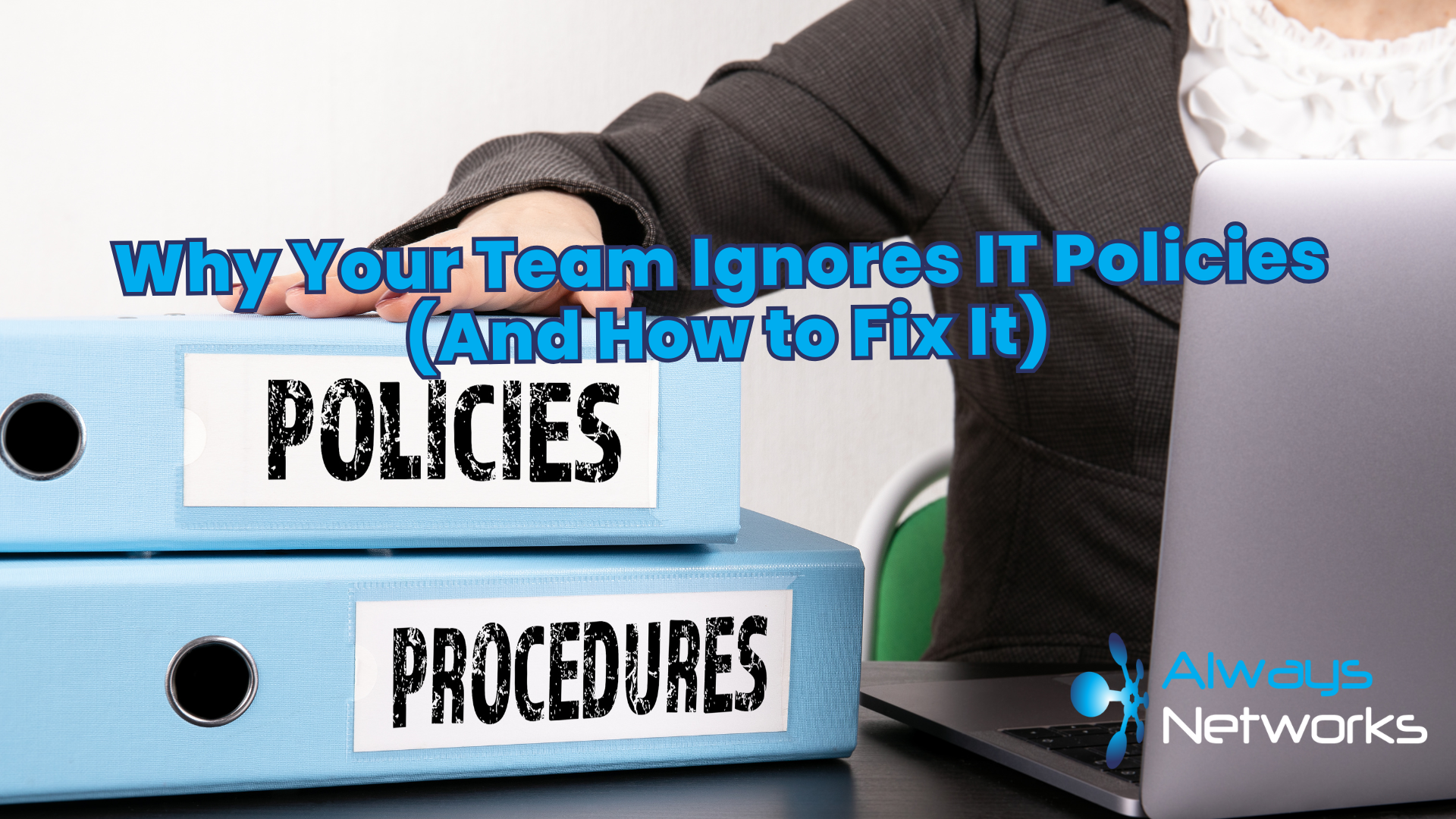Why Your Team Ignores IT Policies (And How to Fix It)
You’ve spent hours crafting comprehensive IT policies. You’ve covered everything from password requirements to data handling procedures. Yet somehow, your team still uses “Password123” and clicks on suspicious email links.Most business owners assume their staff ignore IT policies out of carelessness or defiance. The truth is more nuanced – and the solution is simpler than you might think.
The Real Reasons Behind Policy Avoidance
Policies Are Too Complex
Your IT policy document shouldn’t read like a legal contract. If your team needs a dictionary to understand basic security requirements, they’ll find workarounds instead of compliance.
No Clear Consequences
When policies lack clear outcomes for non-compliance, they become suggestions rather than requirements. Your team needs to understand both the “what” and the “why” behind each rule.
Policies Feel Disconnected from Daily Work
Security measures that interrupt workflow without clear benefit will always face resistance. If following policy makes someone’s job harder without obvious value, they’ll look for shortcuts.
Lack of Training and Support
Handing someone a policy document isn’t training. Your team needs practical guidance on how to implement these policies in their daily routine.
The Cost of Ignored Policies
When IT policies become background noise, real risks emerge:
- Data breaches become more likely
- Compliance issues can trigger costly audits
- System downtime increases
- Recovery costs multiply
- Customer trust erodes
How to Create Policies People Actually Follow
Start with Purpose, Not Rules
Begin each policy section by explaining why it matters. “We require complex passwords because simple ones can be cracked in minutes, potentially exposing client data and costing us thousands in recovery.”
Keep Language Simple
Write policies in plain English. Replace technical jargon with everyday language. Your receptionist should understand your cybersecurity policy as clearly as your IT manager.
Make Compliance Easy
The best policies work with human nature, not against it. Use password managers instead of expecting people to memorise complex passwords. Implement single sign-on rather than requiring multiple logins.
Provide Practical Examples
Show your team what good compliance looks like in practice. Create scenarios they’ll actually encounter, not theoretical situations.
Regular, Bite-Sized Training
Monthly five-minute security updates work better than annual hour-long presentations. Keep training relevant, practical, and brief.
Lead by Example
If leadership doesn’t follow IT policies, neither will your team. Consistency from the top down is essential.
Making Policies Stick
Regular Reviews and Updates
IT policies aren’t set-and-forget documents. Review them quarterly and update based on new threats, technology changes, and team feedback.
Measure What Matters
Track policy compliance through practical metrics. Monitor password strength, phishing simulation results, and software update compliance rather than just policy acknowledgment signatures.
Create Accountability Systems
Implement gentle accountability measures. Regular check-ins work better than surprise audits. Focus on support and improvement rather than punishment.
Gather Feedback
Ask your team where policies create friction in their daily work. Often, small adjustments can dramatically improve compliance without compromising security.
The Bottom Line
Effective IT policies aren’t about creating more rules – they’re about creating better habits. When your team understands the purpose behind policies and finds them easy to follow, compliance becomes natural rather than forced.Your IT policies should protect your business while empowering your team to work effectively. Getting this balance right takes effort, but the alternative – dealing with preventable security incidents – costs far more. Book a call with Nick:



